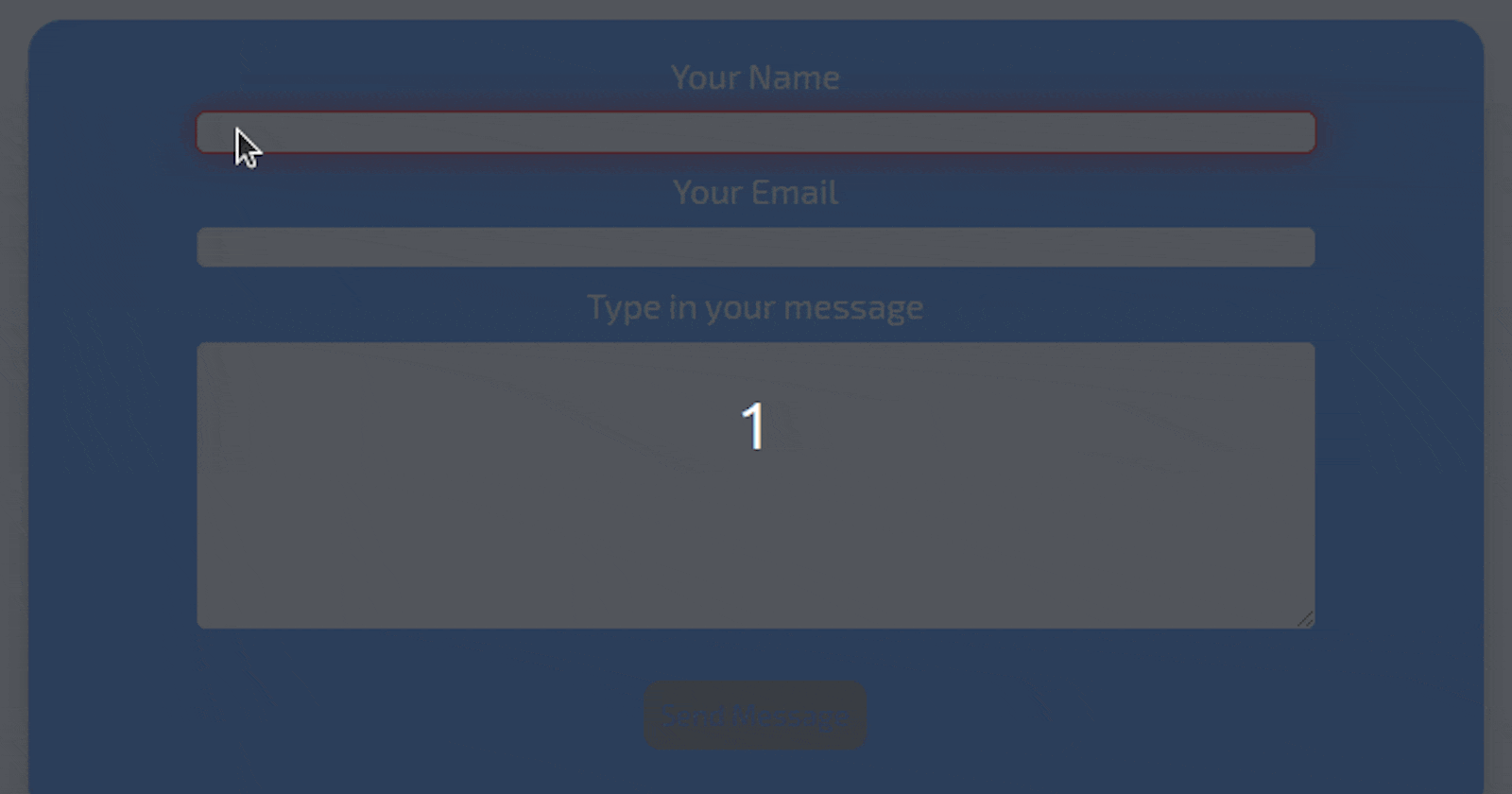Table of contents
Hello World!
When we work with forms in React, we may encounter an issue where we won't be able to type in the input field/text box if the value property is set. I would be showing what is the actual issue and how I fixed it.
Scenario
Requirement
I have an API, which would require three fields namely Email, Name and Message, which need to be passed in the body of the API. In the UI, we would be getting those values in an input field or text area and would be using a button to trigger the API call.
The structure expected in the API is something like this:
{
"email": "testxyz@test.com",
"name": "Test",
"message": "Hi, this is a test message."
}
Implementation
In the React app, I've created a component with 2 input fields for getting the name and email, a text area for getting the message and a button to trigger the API call and send the 3 values. This is what the component looked like:
import { useState } from "react";
import callApi from "../axios/axios";
import "./contact.scss";
const Contact = () => {
const payloadInitial = {
sender: "",
email: "",
message: "",
};
const initialClass = "form-input";
const [payload, setPayload] = useState(payloadInitial);
// Captures Sender name
const setName = (name) => {
const temp = payload
temp.sender = name
setPayload(temp)
};
// Captures Email
const setEmail = (email) => {
const temp = payload
temp.email = email
setPayload(temp)
};
// Captures Message
const setMessage = (message) => {
const temp = payload
temp.message = message
setPayload(temp)
checkCanSend();
};
// Triggers API call on button click
const sendMessage = (evt) => {
evt.preventDefault();
callApi
.post("/email", payload)
.then((res) => {
console.log("Response: ", res)
})
.catch((err) => {
console.error("Something went wrong: ", err)
});
};
return (
<div className="form-container">
<h2 className="form-title">Write to me</h2>
<div className="form-container">
<!--Input to get sender name-->
<label>Your Name</label>
<input
type={"text"}
aria-label="Your Name"
value={payload.sender}
onChange={(e) => setName(e.target.value)}
></input>
<!--Input to get sender email-->
<label>Your Email</label>
<input
type={"email"}
aria-label="Your Email"
value={payload.email}
onChange={(e) => setEmail(e.target.value)}
></input>
<!--Textbox to get the message-->
<label>Type in your message</label>
<textarea
rows={8}
value={payload.message}
onChange={(e) => setMessage(e.target.value)}
></textarea>
<!--Button to trigger API call-->
<button onClick={(e) => sendMessage(e)} className="send-button">
Send Message
</button>
</div>
</div>
);
};
export default Contact;
In the above component, we are listening to the change of input fields using the onChange event and setting the new values to the payload state.
Issue
The above code was causing an issue, where I was not able to type more than one character.

Solution
The solution for the issue is: In the onClick function, instead of storing the state in a temp variable, changing the value in the temp and setting temp to the state, we should update the state directly.
In our case, let us consider the setName function. The function should be changed like this:
const setName = (name) => {
setPayload((prev) => ({
...prev,
sender: name,
}));
checkCanSend();
}
Now the state is updated directly, without having any temp variables.
Now we can type on the input field.

The final code would be:
import { useState } from "react";
import callApi from "../axios/axios";
import "./contact.scss";
const Contact = () => {
const initialClass = "form-input";
const [payload, setPayload] = useState(payloadInitial);
// Captures Sender name
const setName = (name) => {
setPayload((prev) => ({
...prev,
sender: name,
}));
checkCanSend();
};
// Captures Email
const setEmail = (email) => {
setPayload((prev) => ({
...prev,
email,
}));
checkCanSend();
};
// Captures Message
const setMessage = (message) => {
setPayload((prev) => ({
...prev,
message,
}));
checkCanSend();
};
// Triggers API call on button click
const sendMessage = (evt) => {
evt.preventDefault();
callApi
.post("/email", payload)
.then((res) => {
console.log("Response: ", res)
})
.catch((err) => {
console.error("Something went wrong: ", err)
});
};
return (
<div className="form-container">
<h2 className="form-title">Write to me</h2>
<div className="form-container">
<!--Input to get sender name-->
<label>Your Name</label>
<input
type={"text"}
aria-label="Your Name"
value={payload.sender}
onChange={(e) => setName(e.target.value)}
></input>
<!--Input to get sender email-->
<label>Your Email</label>
<input
type={"email"}
aria-label="Your Email"
value={payload.email}
onChange={(e) => setEmail(e.target.value)}
></input>
<!--Textbox to get the message-->
<label>Type in your message</label>
<textarea
rows={8}
value={payload.message}
onChange={(e) => setMessage(e.target.value)}
></textarea>
<!--Button to trigger API call-->
<button onSubmit={(e) => sendMessage(e)} className="send-button">
Send Message
</button>
</div>
</div>
);
};
export default Contact;
Hope this solution is helpful to fix the "Unable to type in the input field" issue. Looking forward to your feedback. Thank you!
